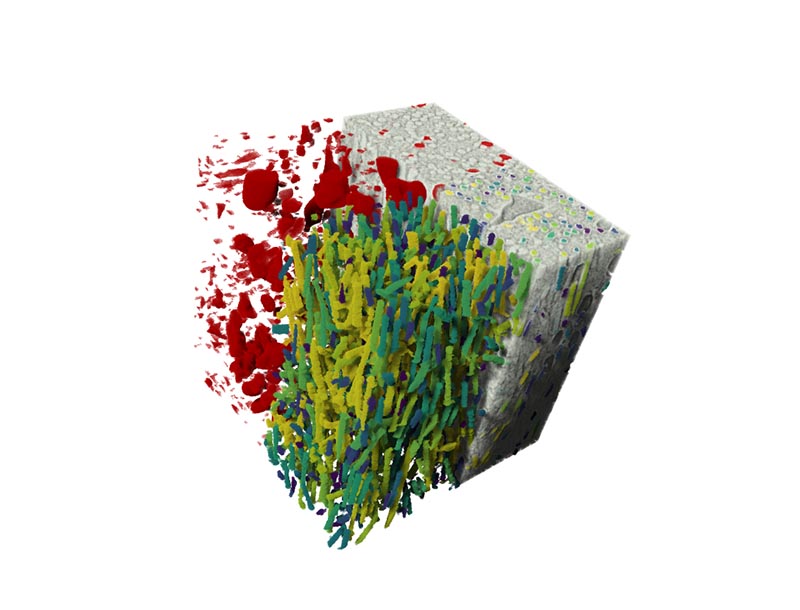CT Products
Research-grade CT scanners
Resolution, versatility, and measurement speed are all important elements. However, for most measurement techniques, they are also in a tradeoff relationship. For X‑ray CT (computed tomography) scanners or X‑ray microscopes, the best combination of the X‑ray source, geometry, and detector is different depending on the desired resolution, sample size, and measurement speed. Rigaku offers three types of X‑ray CT scanners. Each one is optimized for resolution, versatility, or speed.
.jpg?width=450&height=450&name=Rigaku%20CT%20products%20(square).jpg)
nano3DX for resolution
Rigaku nano3DX is a true submicron resolution CT scanner. The parallel beam geometry combined with an ultra-bright 1200 W rotating anode X‑ray source enhances the contrast of low-density materials, which are normally difficult to image using high-energy X‑ray sources.
The X‑ray anode can be selected from Cr (5.4 keV), Cu (8 keV), or Mo (17 keV). These anode materials generate low-energy and pseudo-monochromatic radiation to maximize the X‑ray CT image contrast. The anode material can be selected depending on the sample material and size.
With the highest magnification lens, the nano3DX can achieve 325 nm voxel resolution and true submicron (700 nm) spatial resolution.
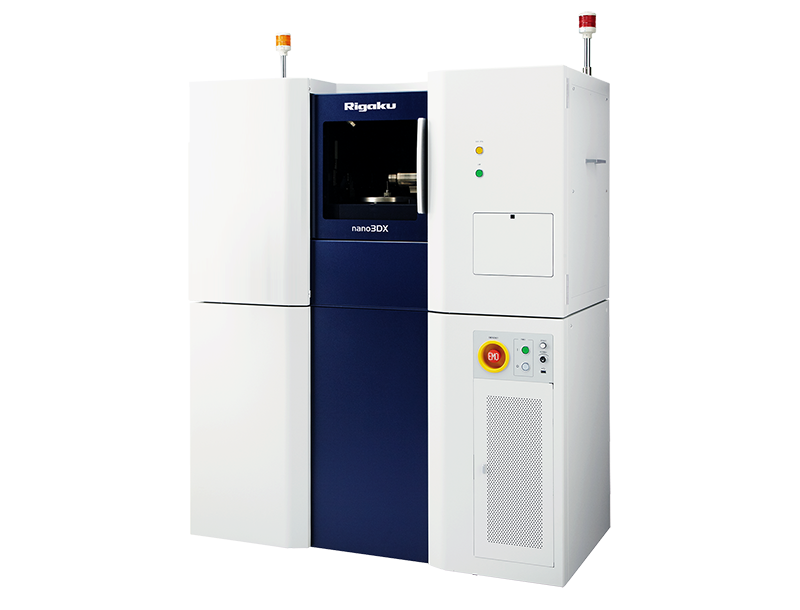
CT Lab HX for versatility
Rigaku CT Lab HX is a benchtop micro-CT scanner. The adjustable SOD (sample-to-object distance) and SDD (source-to-detector distance) make this benchtop micro-CT scanner flexible. It covers from 2.1-micron voxel resolution in the high-resolution mode to 200 mm FOV (field of view) in the large FOV mode.
The CT Lab HX is equipped with a 130 kV - 39 W high-power X‑ray source. The FOV, resolution, X‑ray source settings, and filters are adjustable to optimize the X‑ray energy to various sample materials and sizes.
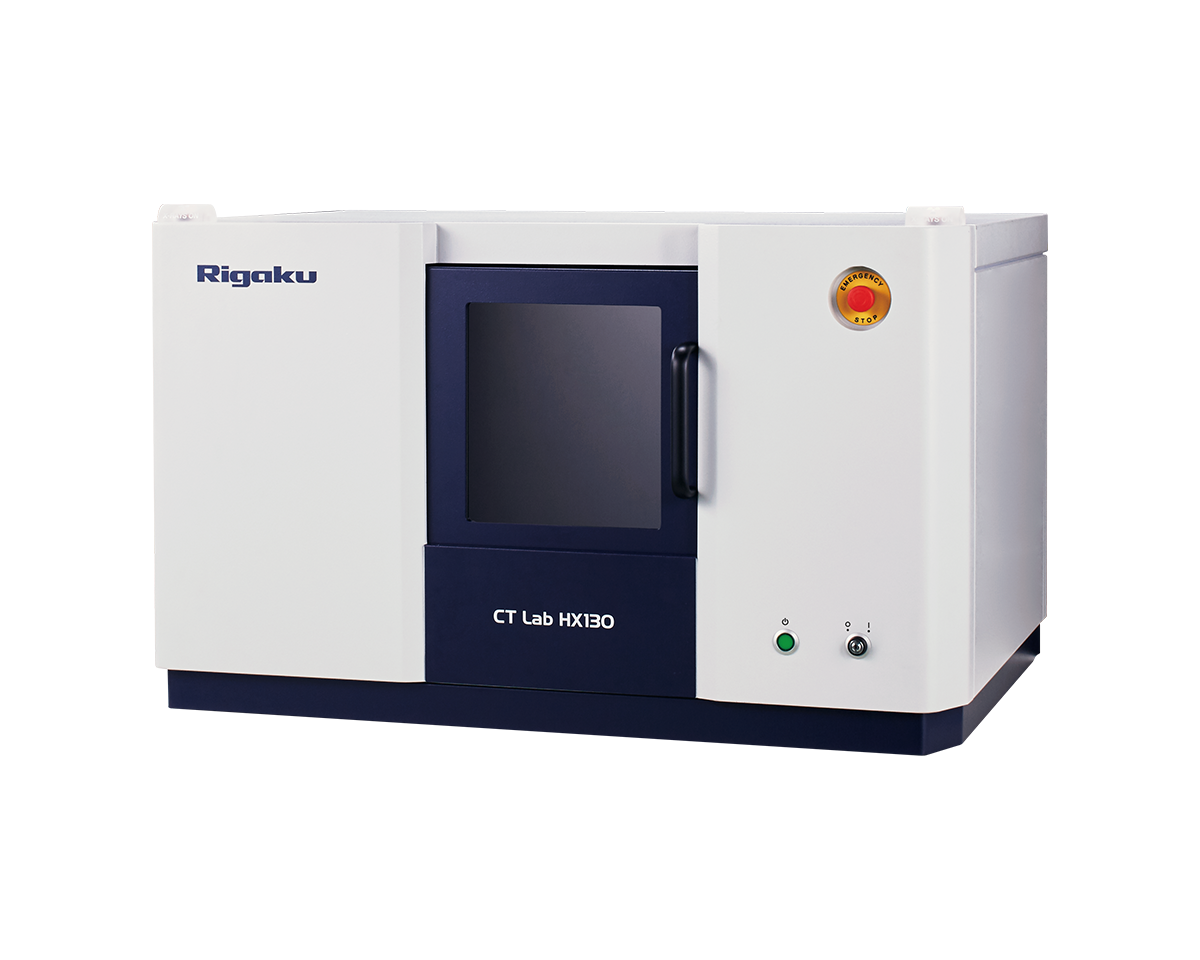
CT Lab HV for industrial failure analysis
Rigaku CT Lab HV is a high-resolution and high-voltage industrial X-ray CT (computed tomography) scanner. The large radiation enclosure, wide door opening, 225 kV high-voltage X-ray source, and variable SOD (source-to-object distance) and SDD (source-to-detector distance) provide the ultimate flexibility to scan small to large samples, up to 600 mm in diameter ×1200 mm in height with a 350 mm FOV (field of view) non-destructively. The high-resolution setting achieves true 3-micron spatial resolution. Our unrivaled technical support will help you utilize state-of-the-art analysis and simulation techniques.
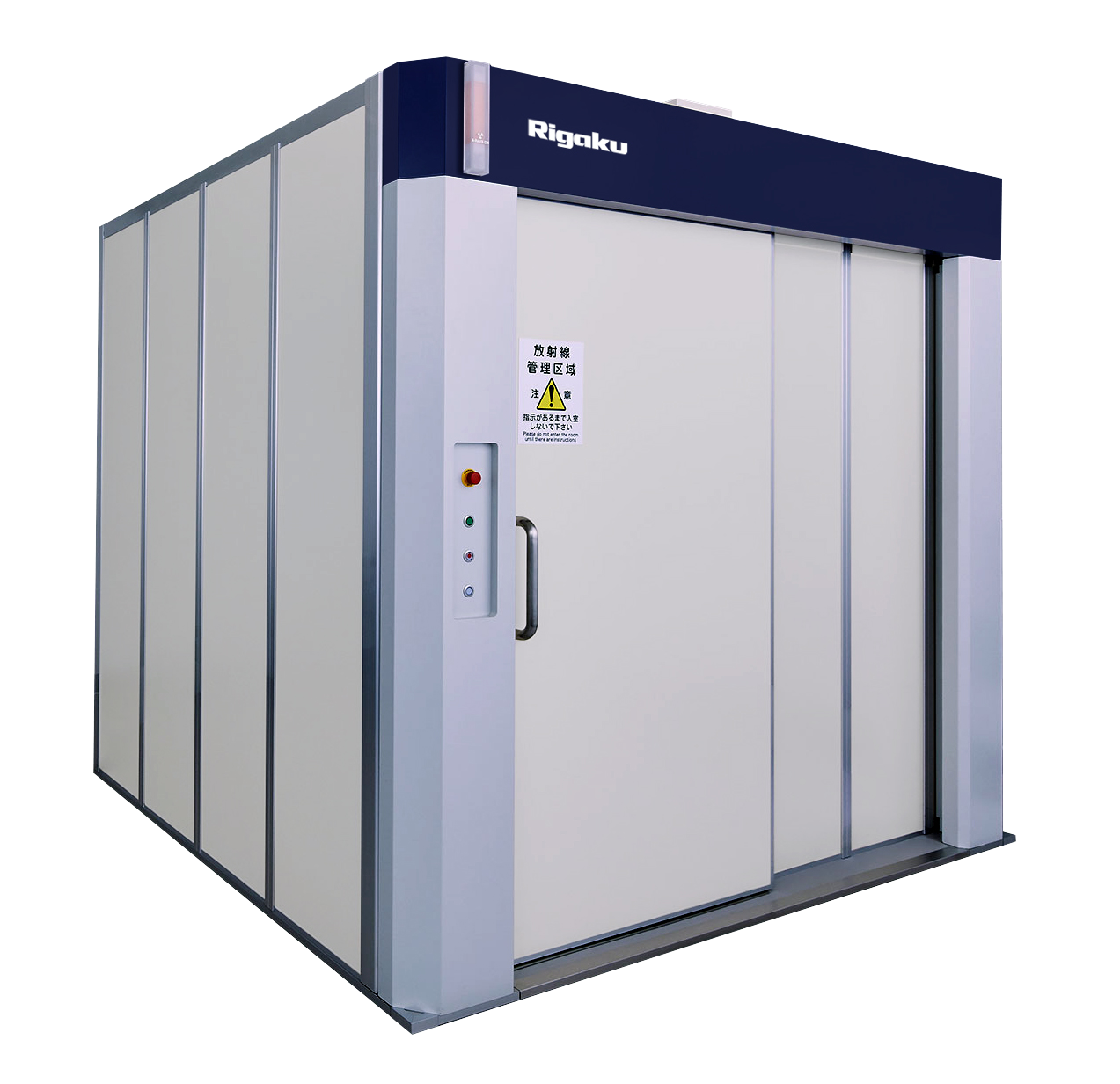
CT Lab GX for speed
Rigaku CT Lab GX is a micro-CT scanner. The sample stays stationary as on a medical CT scanner, making it easy to mount samples with a complex shape or ones connected to in-situ devices.
The combination of a high-power (90 kV - 8 W or 130 kV - 39 W) X‑ray source and the compact gantry geometry achieves ultra-fast scans. A CT scan can be completed in 3.9 seconds at the top speed. The high-speed feature opens up the possibility of time-resolved (4D) CT, in-situ CT, and CT quality inspection.
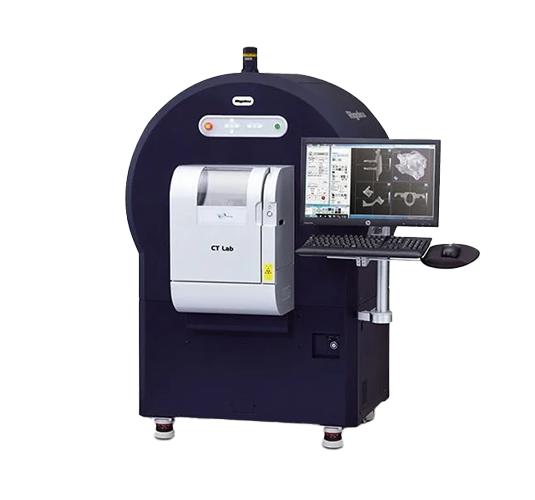
Compare products
| nano3DX | CT Lab HX | CT Lab GX | CT Lab HV | |
| Voxel resolution | 325 nm — 10 µm | 2.1 — 100 µm | 4.5 — 144 µm | Minimum 1.5 µm |
| Field of view (FOV) | 0.66 — 20 mm | 5 — 200 mm | 5 — 72 mm | 4 — 350 mm |
| Maximum sample size | 20 mm diameter x 40 mm height | 200 mm diameter x 270 mm height | 163 mm diameter x 398 mm length | 600 mm in diameter x 1200 mm in height |
| Speed (shortest scan time) | 30 sec | 18 sec | 3.9 sec | 1 min |
| Geometry | Parallel beam geometry | Cone beam geometry | Cone beam gantry geometry | Cone beam geometry |
| X-ray source | 1200 W rotating anode micro source | 39 W traditional micro source | 8 or 39 W traditional micro source | 350 W micro source |
| X-ray source applied voltage | 60 kV (Characteristic X-ray energies at 5.4, 8.0, and 17.4 keV) | 130 kV | 90 kV or 130 kV | 225 kV |
| X-ray detector | High-resolution sCMOS | Flatpanel | Flatpanel | Flatpanel |
| Price | $$$$ | $$ | $$$ | $$$$ |
| Dimensions |
1300 (W) x 1880 (H) x 655(D) mm |
980 (W) x 580 (H) x 700 (D) mm (PC not included) |
1550 (W) x 1535 (H) x 963 (D) mm |
2250 (W) x 2150 (H) x 1800 (D) mm (PC not included) |
| Weight | Approx. 600 kg | Approx. 380 kg | Approx. 450 kg | Approx. 3900 kg |
How do I choose the right CT scanner?
There are four factors to consider:
- Geometry - It affects the resolution, FOV, and measurement speed.
- X-ray energy - It affects the density and thickness of the samples you can image.
- Instrument size - It matters if your lab space is limited.
- Price - It always matters.
Let's take a look at geometry first. Think about what matters the most to your work. If you need submicron resolution, you will need a CT scanner with a lens for optical magnification. When images are magnified solely by a lens, it is called parallel beam geometry. (The scanners with a lens are also called X-ray microscopes.) If a resolution of a few microns will do the job, a cone beam geometry might suffice. These are often less expensive than X-ray microscopes with a lens. If you are looking for an ultimate speed, then a cone beam gantry geometry works best.
The next thing to consider is X-ray energy. The optimum X-ray energy depends on the sample density and thickness X-rays need to get through. Because X-ray CT is an absorption contrast imaging technique, if no X-rays are absorbed (X-ray energy is too high) or all X-rays are absorbed (X-ray energy is too low), you can not get good contrast.
Generally speaking, for relatively small (1~10 mm) organic materials, foams, etc., low-energy X-rays (5 - 20 keV) work best. Small to medium-sized (5~200 mm) plastics, polymers, composites, wood, etc., or small (a few mm) and light metals (aluminum, for example), medium-energy X-rays (20 - 100 keV) work well.
For larger or heavier samples, you will need higher energy (100 - 400 keV). (CSRRI (Center for Synchrotron Radiation Research and Instrumentation) at the Illinois Institute of Technology has a convenient calculator to find a good combination of X-ray energy, material, and thickness: Mucal Periodic Table.)
If your lab space is limited, the instrument size can be a critical factor, too. A benchtop system can save a lot of space. Always check the dimensions and weight of the system. CT scanners can be heavier than they look because of the thick metal radiation shield stopping the high-energy X-rays. It also means that benchtop systems are less expensive for the smaller enclosures. High-energy X-ray-based CT scanners tend to be more expensive for both the enclosure and the X-ray source.
Lastly, we recommend you have a couple of your representative samples scanned on the system you are considering to make sure that you are satisfied with the results. If you would like to try one of Rigaku's CT scanners, talk to one of our CT experts.

How much does a micro CT scanner cost?
Initial costs, as well as the running costs, are crucial factors to consider when choosing the right product.
Read the article >
7 Common Problems with X-ray CT & How To Avoid Them
Are you worried that things might not work out the way you wanted? Learn how to avoid common problems with X-ray CT.
Read the article >
CT vs. SEM: Which Is Better?
Scanning electron microscopes (SEMs) are also commonly used for imaging. CT or SEM? Find out which technique works better for your needs.
Read the article >Applications by industry
CT can help you solve research and development problems in industries such as pharmaceuticals, food, foams and composites, life science, geology, etc.
Applications by analysis type
CT is for more than just imaging. You can analyze the images to quantify parameters such as volume fraction, particle size, wall thickness, etc.
Publications
Rigaku's CT scanners have been used in a wide variety of industries and research areas.
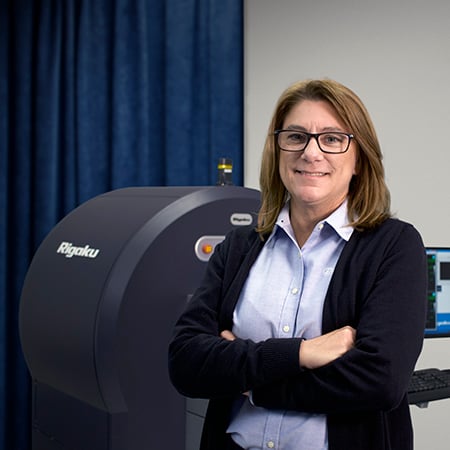
Contact Us
Whether you're interested in getting a quote, want a demo, need technical support, or simply have a question, we're here to help.

